At E3 I had a hands-on opportunity with Ryse: Son of Rome. I also had the chance to hear Cevat Yerli (Founder, CEO and President of Crytek) talk through an extended viewing of the Ryse demo shown at the Microsoft press conference. As he goes on to explain, Rome was not built in a day – in fact Son of Rome is still being built nearly seven years on.
• Developer: Crytek
• Publisher: Microsoft Studios
• Previewed on: Xbox One
• Release Date: November 2013
Before anyone even asks a question at the start of the developer session it is clear that Cevat Yerli is on the defensive. He is so defensive that he is reminiscent of the Testudo formation shown in the Ryse demo. Father to a murdered Kinect title, the lead developer huddles with his troops, shielding against the arrows of criticism, protecting the precious seven years of work they have carried out to get here, while hurling spears of insider knowledge in an attempt to halt the next wave of incoming journalistic attacks. And he may have chosen the wrong position to defend. So far the fight seems to be going against them, but Crytek may yet have the weapons to win the war and the Son of Rome may yet return home a hero.
“It is NOT a Quick Time Event!” is the battle cry. “People have labeled [Ryse’s button prompts] Quick Time Events. I understand why they say that because, at the press conference, everything was very fast. This is not a Quick Time Game.” The problem here is not speed of presentation but the accuracy of definition. Despite protestations, what is seen on the screens of Ryse is essentially a QTE. When we see a button prompt flash up on-screen that has a limited window for success or failure, then people are going to label it as a Quick Time Event – mainly because that is what they are called.
“These are execution moves that are grading your timing…if you don’t press you don’t get a reward.” Okay, so an optional QTE. “Quick Time Events are always usually a death experience, it’s like A or B. Here there are…like twelve different shades effectively.” So, an optional QTE with multiple potential outcomes. “On harder difficulty settings the on-screen prompts don’t appear.” Well, fine – in harder difficulty settings you do not have the textbook definition of a QTE, but in all lower levels of difficulty you do. Stop saying you don’t – it isn’t a battle worth fighting. Your combat is good enough to stand on its own two sandal-wearing feet anyway.
Also, in his defence, I will say that while QTE’s may have an air of negativity and a tendency for gamers to be a bit snobbish about their use, they continue to show up in games for one main reason – they are effective at what they do – i.e. they help make on-screen, context-sensitive actions look cool just by pressing a button. Cevat explains that: “Everybody can look good in this game. You can just look better and better, but you can never look bad.” Gamers like QTE’s more than they would care to admit – just as long as they are well implemented and not overused.
Unfortunately, from all viewings of the demo seen and played at E3, the use of QTE’s which end with lead character Marius Titus repeatedly stabbing barbarians in the back of the neck, appeared all too obviously repetitious – but at least they have a decent answer for that. You are able to unlock more executions with alternative animations as you progress and there are “up to 100 available” in the full game. This does then beg the question: why a few more were not unlocked for the purposes of making the demo look more interesting? At least it is less likely to be an issue in the final game.
Cevat goes on to explain how the execution system fits into the rest of the game: “The execution moves are a reward mechanic in Ryse.” Instead of having enemies drop loot, the developers want gamers to have the choice of the reward for any combat situation. There are no health in chests or health regen in the game and you can only replenish health by choosing a style of execution move that does so. From the four options that will be available to pick with the D-pad in the final game, they were only talking about health executions for now.
Defending the linearity of the footage shown Cevat explains “This is an intense game, like – Go! Go! Go! There are other areas that are slower paced and technically you can explore and do alternative paths etc, but we are not trying to be a sandbox game — As in the open space — we are trying to be a sandbox in the combat.” Cevat goes on to explain that there is a tactical element to the order in which you face enemies and outlines the basic principles by which they approached combat design; “The three design aspects for the combat was always; flow, intensity and emotion.”
When playing through the demo myself I found that combat flows a bit like a Roman Batman (Roman-man, Bat-Ro-Man?) without the gadgets — which is not a bad mark to measure up to and is more fun to play than may have come across in the footage shown so far. Basic combat is centered around using your shield to deflect attacks. Better timing of your deflection will stagger your enemy further and give you a bigger window of opportunity to attack. Once weakened sufficiently, an enemy can be finished off with an execution move or multiple enemies can be stacked in a weakened state and then finished off in one multi-killing move that will require more prompted button presses than usual. This will result in a greater score but at a greater risk of a more complicated execution move and an increased chance of being successfully attacked by one of the weakened foes.
The section that sees you commanding a legion of soldiers in a Tetsudo (or Tortoise) formation is a nice change in pace of combat. Despite any criticism this has faced for being overly scripted this section felt satisfying to play through and there is a small amount of skill to be employed in the timing of when you chose to hold the button to defend and when you hold down the trigger to wind up your javelin throws to take out the archers. I do not think you can fail this section, but more of your soldiers will die if you do badly and as Cevat says; “Marius is the type of leader who wants to keep his men alive.”
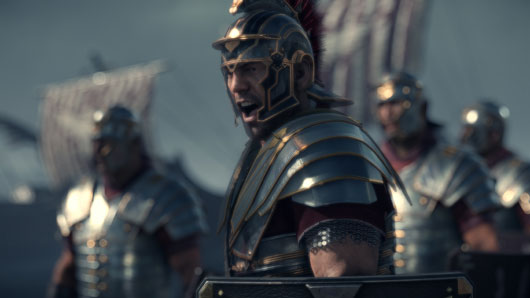
Cevat also explained how new technology was enabling them to get even more accurate at capturing human likenesses, motion and emotion; “Every hit is intense. Every response is intense. The barbarians have a bloodlust in their eye. They want to kill you. And we want to capture that in the interactivity as well as the presentation.” Performance capturing is used throughout the game, for cut scenes and in the combat system – which they boldly claim to be a first in gaming. “Every move you do in the game; Every sword strike, every shield blow, was captured by an actor or stuntman.” For Cevat this is going to be a key feature of the upcoming technology; “Last-gen was about motion capture. Current or next-gen is about performance capture.”
Another journalist in the room gets half way with a the first question; “I know that Ryse started off as a Kinect game…” “It did not!” – came back the interjecting defensive response and Cevat went on to explain. “It started as a first person controller-based game. Then it turned into a Kinect-based game, turning into what it is today. I would say this is version number three of Ryse.” Cevat explains how Kinect disrupted development: “Kinect came to the market and allowed us to differentiate. We explored that area and it didn’t feel quite right…So we moved it to third-person, still Kinect-based but it didn’t feel dynamic enough for core games. Fighting games are about timing and flow. Plus, core gamers and myself, to be honest I don’t see myself standing for four to five hours playing and fighting the battle. I want to relax and entertain myself when I play a game.” The phrase “Core game” or “Core gamer” is stabbed into my ears multiple times in the presentation and seems to be their main defence against previously being labeled a Kinect title.
I asked if the voice commands on display were the only Kinect functions that remained, the reply was that “We are currently experimenting and we are not done yet, but voice is a safe bet. We are looking at certain gestures at this point, seeing what we can do with the controller. The hands have to be on the controller – this is a core experience.” Cevat goes on to explain that you can just use the Left Bumper button if you are not in a position to yell at your TV and teases that there will be more to do with voice commands than the simple instructions of having your soldiers being told to attack or capture as seen in the demo; “We just talked about today commanding your soldiers but there is more to it.” Perhaps you will be able to yell “ARE YOU NOT ENTERTAINED?” into the camera for Gladiatorial celebration. Which might actually be of some use in the Multiplayer aspect that was briefly mentioned and labeled as the “Coliseum mode” but again this was something they were not talking about in detail just yet.
One factor that they did highlight and share was to indicate how SmartGlass tech can be used to share your gaming experiences in the Xbox One vision of the Next Generation. Using SmartGlass — or an in-game menu system of the same options — a timeline is filled as you make progress. At certain points on this timeline if your friend has scored better than you in a certain section, a square box with their Avatar will be bookmarked into the timeline. Clicking on this will allow you to watch a video of your friend’s playthrough and show you how they achieved that score. Cevat described it as “A multimedia way of sharing your score hunting experience.”
Ryse: Son of Rome is of more interest to me having played it. The Roman setting is one that has not been overused in the action genre and while it may not being handled with full historical accuracy, it does seem to amounting to an enjoyable action game. It does look very good with the moment when the ship crashes into the shoreline with burning barrels being a graphically impressive highlight. The visual setting on the battlefield and the level of detail in the characters do help to give the game that next-gen shiny glow that helped me get a taste of what Xbox One graphics can do. I am a little concerned about the length of time this game has been in development and how those changes will affect the final product, but if they are taking the time to make sure everything is right, then the Son of Rome may play his part in Xbox One’s Day One assault for world domination.
Official Game Site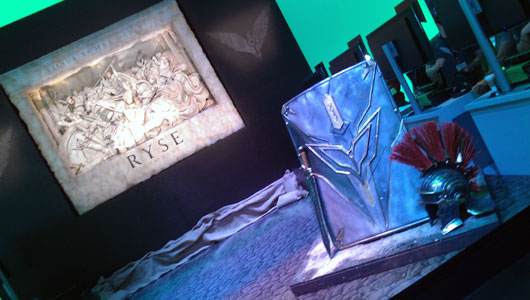
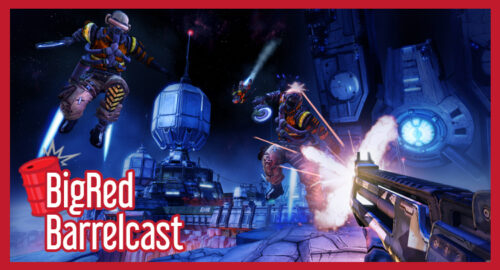

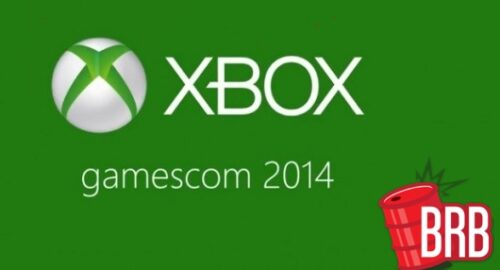

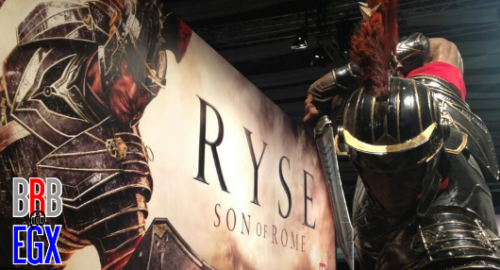
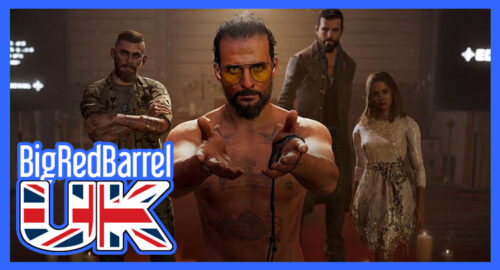
DS Domination Review
Nice post. I learn something totally new and challenging on blogs I stumbleupon every
day. It’s always helpful to read through articles from other writers and practice something from other sites.